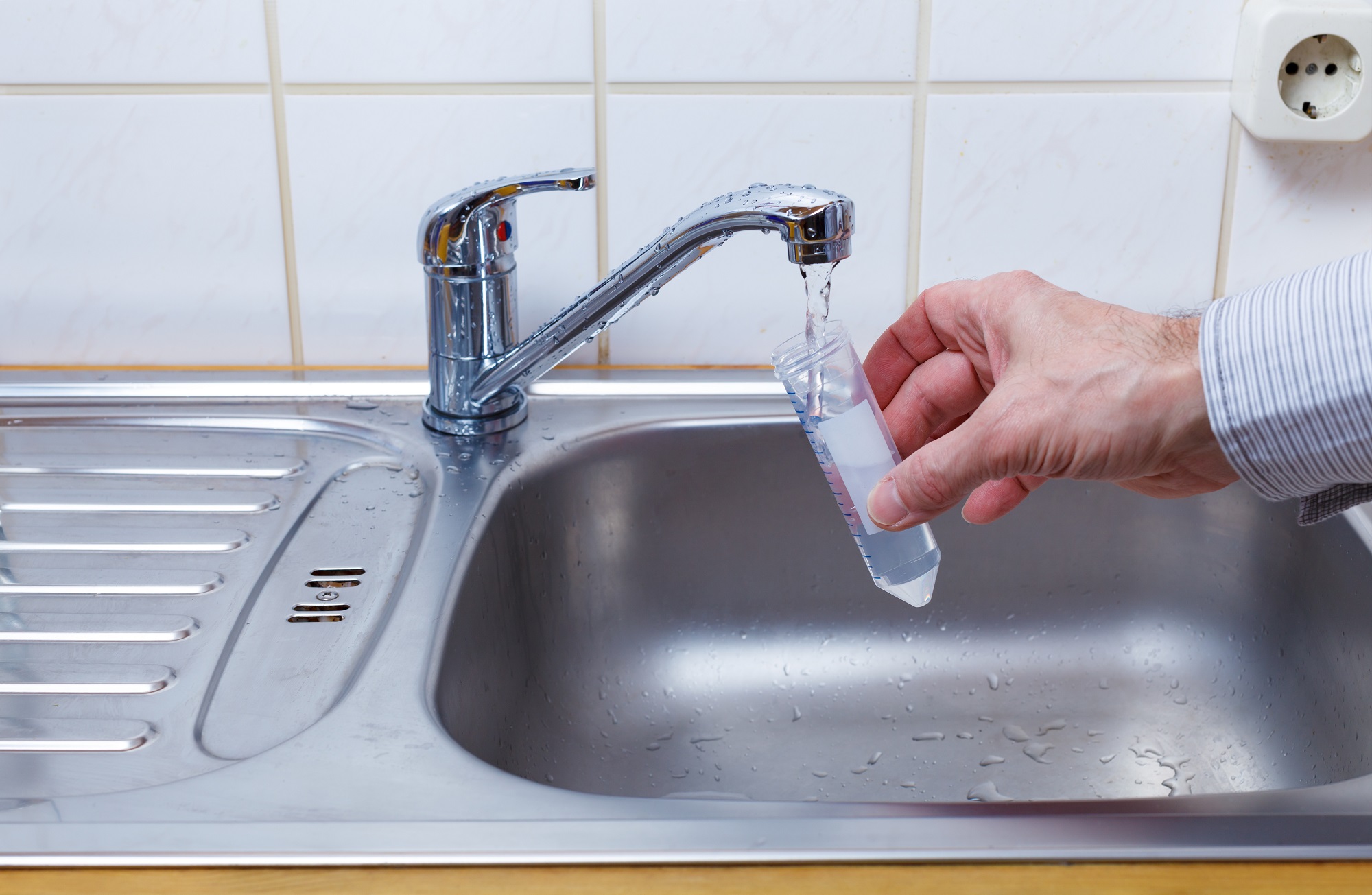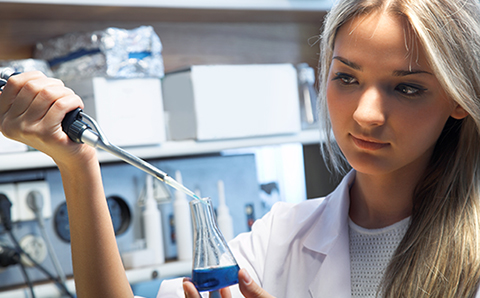Expert Well Water Testing Services: Get Accurate Outcomes Quick
Expert Well Water Testing Services: Get Accurate Outcomes Quick
Blog Article
Discover What Is Included in Water Evaluating and Exactly How It Makes Sure Safe Drinking Water
Understanding the intricacies of water screening is essential in making sure the quality and security of our alcohol consumption water. Through a careful examination of physical, chemical, and microbiological facets, water screening recognizes potential pollutants that can position health risks. From the presence of heavy metals to unsafe bacteria, each examination element plays an important duty in preserving the integrity of our water system. Advanced strategies like chromatography and spectrometry boost the precision of these analyses. Yet, just how do these procedures translate right into the governing frameworks that assure safety and security in our daily intake?
Trick Parts of Water Screening
Water testing is a vital procedure that includes a number of vital parts to ensure the safety and top quality of drinking water. Additionally, ensuring the pH equilibrium of water is necessary, as it influences the water's corrosiveness and the effectiveness of disinfection procedures.
An additional substantial part entails microbiological evaluation, where water examples are taken a look at for the visibility of bacteria such as microorganisms, infections, and protozoa. If taken in, this evaluation is important to determine biological dangers that could position wellness dangers. Additionally, chemical evaluations are conducted to find natural and inorganic compounds, such as hefty metals, nitrates, and chemicals, that may be present in the water supply.

Identifying Damaging Pollutants
Finding hazardous contaminants in drinking water is a fundamental element of protecting public wellness. Each type of pollutant presents distinct health risks, making their detection critical to make sure the water consumed by the public is safe.
Water testing for pollutants is typically performed by regulatory companies and water energies, employing a mix of field sampling and research laboratory evaluation. These evaluations are designed to discover both normally happening substances and anthropogenic contaminants that might have gone into the water system via farming drainage, commercial discharge, or aging facilities. Routine tracking is important, as contamination levels can fluctuate due to ecological changes, seasonal variants, or human tasks.
The identification of dangerous impurities educates needed activities, such as water therapy interventions or public advisories, to minimize threats. Early discovery is essential to avoid damaging health impacts, varying from intestinal diseases to lasting conditions like cancer, thus making sure the continued security of drinking water.

Chemical Evaluation Strategies
In the world of ensuring safe alcohol consumption water, chemical evaluation strategies play a pivotal duty in determining and measuring pollutants. These methods are important for detecting a broad selection of chemical compounds, consisting of heavy steels, chemicals, and industrial contaminants, which can posture considerable wellness risks. Strategies such as atomic absorption spectroscopy (AAS) and inductively coupled plasma mass spectrometry (ICP-MS) are commonly utilized to determine trace levels of steels like mercury, arsenic, and lead. These instruments give accurate quantification, facilitating compliance with regulative requirements.
Gas chromatography-mass spectrometry (GC-MS) is one more crucial method, particularly for natural compounds. It divides complicated blends and recognizes semi-volatile and unstable organic compounds, making certain that pollutants like benzene and toluene are within secure restrictions. High-performance fluid chromatography (HPLC) is in a similar way utilized for non-volatile substances, including particular chemicals and drugs.
Ion chromatography is employed to identify concentrations of cations and anions, such as nitrates and sulfates, which are crucial in evaluating water high quality. These chemical evaluation strategies collectively ensure that alcohol consumption water stays safe by detecting discrepancies from established purity norms, consequently guarding public health and wellness. Making certain accuracy and accuracy in these tests is paramount to maintaining the integrity of water security analyses.
Microbiological Checking Methods
Exact microbiological screening is crucial for protecting public wellness by guaranteeing that alcohol consumption water is totally free from harmful pathogens. This procedure involves finding and mentioning microbes such as microorganisms, viruses, and protozoa that might infect water supplies. Usual microorganisms Water Tesing Services Tampa consist of Escherichia coli, Giardia, and Cryptosporidium, each presenting significant health and wellness dangers.
Several techniques are employed in microbiological screening to determine these threats. The membrane layer filtering technique is regularly utilized, involving water passing via a filter that records microorganisms, which are then cultured to determine their visibility and concentration. The multiple-tube fermentation technique enables the quantification of coliform microorganisms making use of a collection of dilution and incubation steps.
Developments in technology have presented molecular strategies such as polymerase chain response (PCR), which enables the highly particular and rapid detection of virus by intensifying their hereditary material. Enzyme-linked immunosorbent assays (ELISA) likewise supply an approach to identify microorganisms by determining details proteins or antigens.
These differed methods are vital for detailed water quality assessment, guaranteeing that water treatment processes work and that distribution systems preserve security. By utilizing these microbiological testing techniques, potential carcinogen can be recognized and alleviated without delay.

Significance for Public Health And Wellness
Making certain the microbiological safety of drinking water directly influences public health by avoiding the spread of waterborne conditions. Microorganisms such as germs, infections, and protozoa can cause health problems like cholera, dysentery, and stomach infections (Water Tesing Services Orlando). The application of detailed water testing procedures is critical in identifying and alleviating these risks, thus securing neighborhoods from potential outbreaks
Routine water screening not just detects microbial impurities yet also evaluates chemical and physical parameters that can influence health. For example, extreme degrees of nitrates or heavy metals such as lead can present major wellness risks, particularly to vulnerable populations like babies and expecting ladies. By determining these hazards early, water screening makes it possible for timely interventions, making sure the water supply continues to be within secure intake criteria.
Moreover, water testing plays a crucial function in maintaining public self-confidence in community water systems. For plan makers and health and wellness authorities, the information derived from water screening notifies choices on framework financial investments and public health strategies, making certain sources are guided where they are most needed.
Final Thought
Water testing serves as a crucial system for guaranteeing the safety and security and top quality of drinking water through comprehensive analysis of its physical, chemical, and microbiological buildings. By spotting harmful contaminants, such as hefty steels and pesticides, and using innovative methods like chromatography and spectrometry, water screening assists in the recognition of potential wellness dangers. The execution of strenuous screening methods is crucial for preserving compliance with safety and security standards, eventually securing public health and wellness and enhancing confidence in municipal water supply.

By recognizing these threats early, water testing enables prompt interventions, guaranteeing the water supply remains within risk-free consumption criteria.
Water testing serves as an essential mechanism for making certain the safety and security and high quality of drinking water through detailed examination of its physical, chemical, and microbiological homes.
Report this page